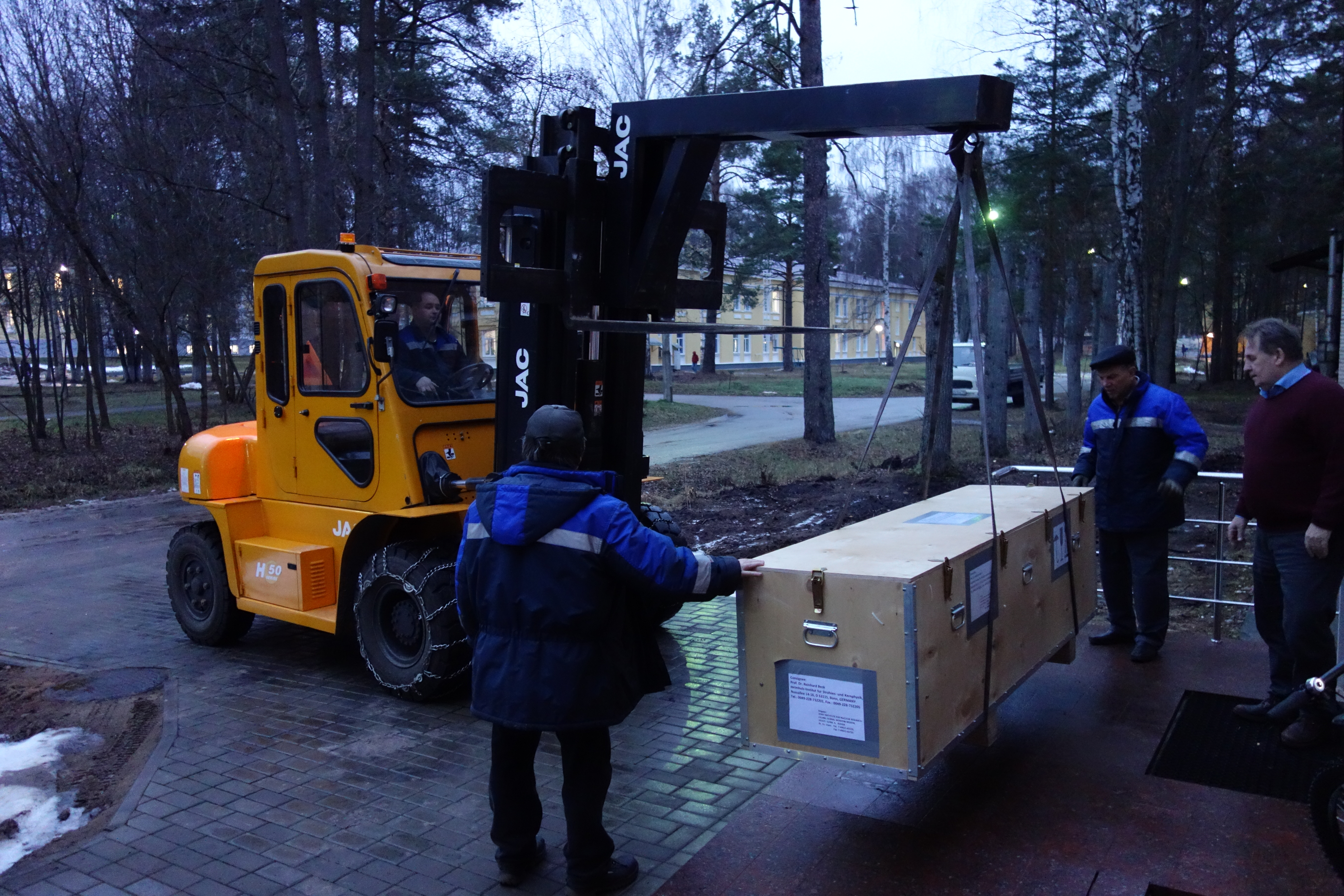Cryostat for the Crystal Barrel Experiment on its Way to Bonn!

The polarization studies aim at investigating the dependence of nuclear-nuclear interactions on the spins of the particles involved in them. Since polarization experiments were always of great complexity, this direction started rapidly developing only recently together with advances in experimental techniques.
For such experiments the polarized targets are needed. They can be produced by exposure of samples to a strong magnetic field (2-5 T) and to low temperatures (less than 50 mK). The less the temperature of the sample, the more the relaxation time, which decreases the number of interruptions during data acquisition at the accelerator. The 3He/4He dilution cryostats, being produced at DLNP (in the Sector of Low Temperatures), are used to generate and to keep low temperatures. Continuously operating, they make it possible to reach cooling temperatures down to 20 mK.
In 1966, one of the world’s first 3He/4He dilution cryostats was created in Dubna by the DLNP researchers B.S. Neganov, N.S. Borisov and M.Yu. Liburg, which enabled forwarding the polarization studies. Since 1966, dilution cryostats and targets for a wide range of experiments have been developed in the Sector of Low Temperatures at DLNP. For an advanced experiment, a polarized beam, polarized target and system of reaction product detection are needed.
The upgraded Crystal Barrel facility at the ELSA accelerator at the University of Bonn makes it possible to measure double polarization observables in the reactions of photoproduction of neutral mesons. These are the measurements that are considered the key ones in the search for “missing” resonances while studying the photoproduction of mesons and hyperons on protons. The main aim of intended experiments is investigation of the nucleon internal structure, measurement of nucleon spin polarizabilities in the reactions of the double polarization Compton scattering, etc.
Over the period of four years, not only DLNP staff members but also experts from various JINR departments worked hard to complete the production of the 3He/4He dilution refrigerator of a new polarized target for joint experiments at the ELSA accelerator of the University of Bonn. From now on, greater part of the experiment will be performed in Bonn with an active participation of the staff members of the Sector of Low Temperatures.
According to the expected characteristics and capabilities, this experimental facility will be ultimately unique in the world. Firstly, the rejection of external magnetic fields around the cryostat of the polarized target will greatly simplify the target manipulation and not only reduce the beam exposure time but also partially automate operation processes. Secondly, it will be the Active Target that allows the working medium of the target to be also used as low-temperature scintillator. These two points guarantee that the future polarized target will be the most perfect experimental facility of its kind. So, the DLNP traditions to use very low temperatures in polarization experiments continue.
More photos on the transportation of the cryostat to Bonn you can find here.

